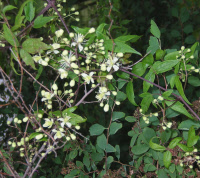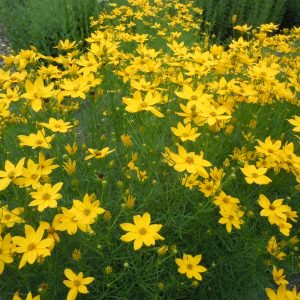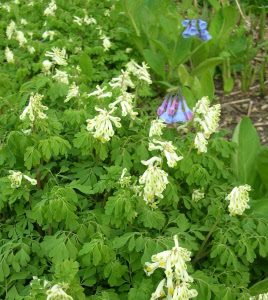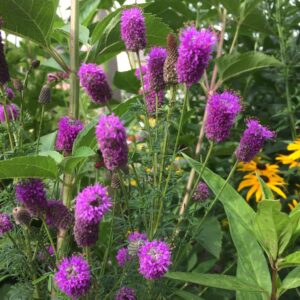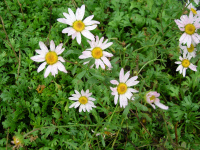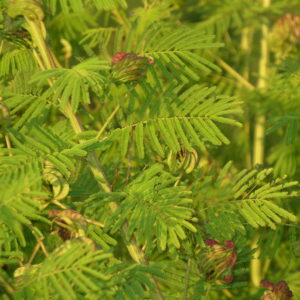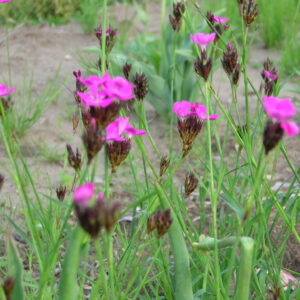Drought, Xeric & Dry Soil Plants
Showing 25–32 of 126 results
-
Clematis virginiana Virgin’s bower, Devil’s darning needles Z 4-8
July-September star-like white blossoms
July-September star-like white blossoms cover this vine – good for clambering up small trees.
Size: 12-20’ x 4’
Care: Sun to shade moist well-drained soil. Flowers on new stems so cut back in late winter or early spring to 6-8” above the ground.
Native: Nova Scotia to Georgia and as far west as Kansas, Wisconsin nativeThe genus Clematis was named by Dioscordes, physician in Nero’s army, from “klema” meaning climbing plant. One of 1st No. American plants sent to Europe – grew in Tradescant the Elder’s South Lambeth nursery in 1634. Grown by Jefferson at Monticello in 1807. Described by Breck in his 1851 book The Flower Garden: “The flowers are white borne upon cymes, and make a handsome appearance.” Cherokee mixed this plant with milkweed to remedy backaches. A root extract cured stomach aches, nervous conditions and kidney ailments. For the Iroquois powdered root fixed venereal disease sores and an extract of the stem brought on strange dreams. Pressed specimen in Emily Dickinson’s herbarium.
-
Coreopsis verticillata Thread leafed tickseed Z 4-9
All summer into fall, free-blooming non-stop - yolk yellow daisies of 8 narrow spoon-shaped petals with a color matching center each atop a wiry stem. Cut back half-way to promote reblooming in fall.
All summer into fall, free-blooming non-stop – yolk yellow daisies of 8 narrow spoon-shaped petals with a color matching center each atop a wiry stem. Cut back half-way to promote reblooming in fall.
Size: 24" x 18" spreading
Care: Sun to part shade well-drained to moist well-drained soil, drought tolerant
Native: S.E. U.S.
Wildlife Value: attracts butterflies, Deer resistantNatives made a tea with the roots to remedy diarrhea and induce vomiting and a tea with the plant tops to make blood strong. A drink made from boiling the entire plant was used to remedy internal pain and bleeding. Also made a red dye and a yellow dye. Exported from its native America to England in 1759.
-
Corydalis lutea syn. Pseudofumaria lutea Yellow fumitory, Z 4-8
Clumps of canary yellow narrow tube-shaped flowers with flared ends bloom over mounds of ferny foliage from late spring – fall. Longest blooming shade flower
Clumps of canary yellow narrow tube-shaped flowers with flared ends bloom over mounds of ferny foliage from late spring – fall. Longest blooming shade flower
Size: 9-15" x 18"
Care: part shade to shade in moist well-drained to well-drained soil
Native: Throughout EuropeCorydalis is Greek for “lark” korydalos, referring to the shape of flower, a lark’s spur. Lutea means “yellow.” According to 16th century herbalist Culpepper, “Saturn owns the herb” so Corydalis lutea cured Saturn’s diseases of the liver, spleen, leprosy, scabs, itches, cholera, salty blood, jaundice, melancholy, plague, pestilence and red eyes. Greek physician Dioscordes authored 5-volume De Materia Medica writing that this “hinders fresh springing of hairs on the eye lids.”
-
Corydalis ochroleuca syn. Pseudofumaria alba Z 4-8
Clumps of crem white with a touch of yellow, narrow, tube-shaped flowers with flared ends bloom over mounds of ferny foliage from late spring – fall. One of longest blooming flowers for shade.
Clumps of cream white with a touch of yellow, narrow, tube-shaped flowers with flared ends bloom over mounds of ferny foliage from late spring – fall. One of longest blooming flowers for shade.
Size: 6-12” x 12”
Care: Shade to part shade in well-drained soil
Native: BalkansCorydalis is Greek for “lark” korydalos, referring to the shape of flower resembling a lark’s spur. This species published in 1831. Gertrude Jekyll (1848-1931) planted Corydalis ochroleuca as a “wide carpet” under peonies in her spring garden at her home, Munstead Wood.
-
Dalea purpurea syn. Petalostemon purpurea Violet prairie clover Z 4-9
Vase shaped clump with wands of violet to purple encircling tall coneheads mid-summer
Vase shaped clump with wands of violet to purple encircling tall coneheads mid-summer
Size: 2’ x 18”
Care: full sun in well-drained to moist well-drained soil.
Native: Canada to Texas, Wisconsin native
Wildlife Value: Host for caterpillars of Dogface Sulphur, Striped blue & Mexican blue butterflies. Supports over 80 bee species including endangered Rusty patched Bumble BeesDalea named to honor English botanist Dr. Samuel Dale (1659- 1739.) Chippewa, Meskwaki and Navajo used medicinally – as remedies for heart ailments, pneumonia, diarrhea and measles. Comanche and Lakota chewed the root like gum, for its sweet taste. Sioux combined it with Amorpha canescens, Leadplant to ambush bison. Sioux also treated fevers and stomach disorders with an infusion made from the plant. Pawnee made brooms from the flexible stems. 1st collected by French botanist André Michaux (1746-1802) who spent 11 years in America collecting hundreds of new plants.
-
Dendranthema weyrichii syn. Chrysanthemum weyrichii Alpine daisy Z 4-8
Pink or white daisies all summer and fall
OUT OF STOCK
Pink or white daisies all summer and fall. One of the best for groundcover, front of border or rock garden plant.
Size: 6” x 18”
Care: sun in well-drained soil. Drought tolerant.
Native: East Asia & eastern RussiaCollected before 1891
-
Desmanthus illinoensis Prairie mimosa, Illinois bundleflower Z 5-9
This legume bears round heads of frilly white flowers that turn to interesting spherical seed pods persisting all winter.
This legume bears round heads of frilly white flowers that turn to interesting spherical seed pods persisting all winter.
Size: 4’ x 3’
Care: sun in moist well-drained to dry soil. Looks like a shrub but is a perennial.
Native: Ohio to Florida and west to New Mexico and all states in between
Wildlife Value: Seeds are food for birds including the Ring-Necked Pheasant, Bobwhite Quail, and Greater Prairie Chicken.Desmanthus is Greek meaning “bundle flower” because the bunched flowers look like a bundle. Pawnee, Sioux, Omaha & Ponca children used seed pods with dried seeds as rattles. Pawnees relieved itching with the boiled leaves. Sioux ate roasted seeds. First collected by French plant hunter Michaux in the late 1700’s.
-
Dianthus carthusianorum Carthusian pink, Clusterhead pink Z 5-9
Deep reddish pink flowers atop wiry stems from June until frost
Rosy carmine pink flowers atop wiry stems from June until frost
Size: 16" x 8"
Care: sun in moist well-drained soil.
Native: Central and southern Europe
Wildlife Value: attracts hummingbirds. Deer resistant.The common name “pink” is from “pinct” referring to the jagged edge of the petals. The word “pink” referring to the color, came from the fact that most of the Dianthus are pink. This species may have come into gardens with the Carthusian monks in the 1100’s.

